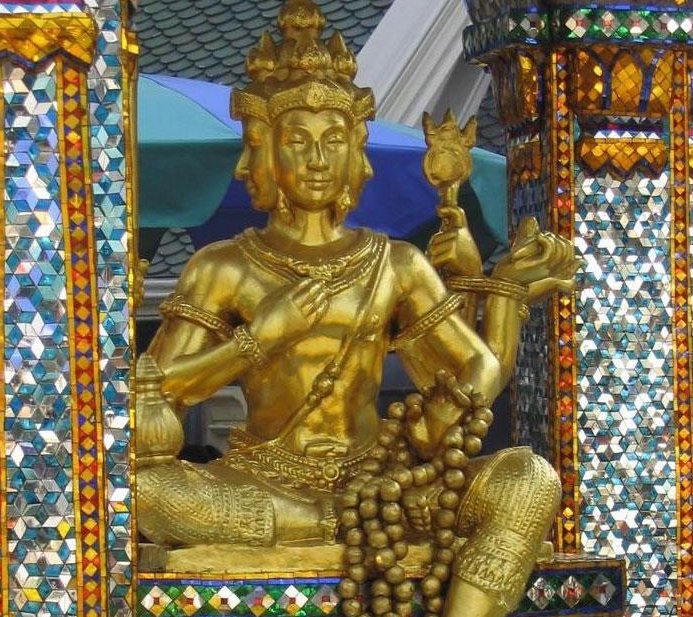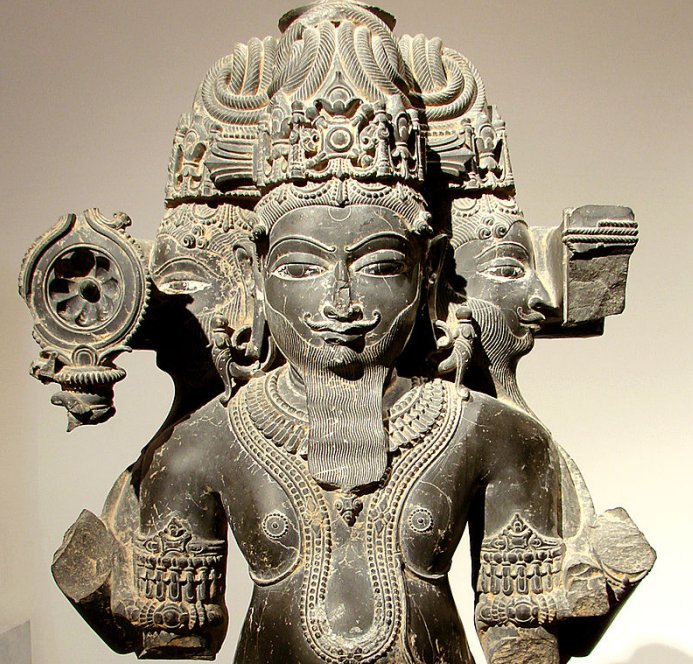Brahma: First God In Hindu Trimurti, Creator Of The World And All Creatures
A. Sutherland - AncientPages.com - Traditionally, Brahma is one of the central gods of Hindu mythology; however, in present-day Hinduism, he has a more obscure role.
Statue of Brahma in Bangkok, Thailand. Source
Brahma is a deity with four faces and four arms, sitting on a lotus flower, in a chariot (vahana), pulled by divine swans. Each face of Brahma points to a cardinal direction. He is usually depicted dressed in white, with a white beard, suggesting his sage-like experience. He possesses a vast capacity of wisdom; his four mouths are credited with creating the four Vedas and it is from him all knowledge comes, which has been given to human beings and gods.
Brahma is a part of the Hindu trinity – Trimurti, in which, he is together with Shiva, the destroyer, and Vishnu, the maintainer. Legend has it that before the First Night came, the world was demolished by a terrible, fiery cataclysm. Brahma had to recreate it. It was Brahma who gave the day of the beginning of everything (or the “First Day”) a chance to exist once again.
In Hindu cosmology, the time of creation is recorded in the days and years of the life of Brahma, who personifies god. One day in the life of Brahma is called Kalpa, The Kalpa lasts 4,320 million human years. One year in his life lasts 360 of these days and nights. Brahma’s life lasts 100 of these years.
According to some Hindu myths, Brahma was born from a golden egg placed in the primeval waters or was made of a lotus flower growing out of the navel of the god Vishnu, (or was called to live by Shiva).
Sculpture of Brahma, Guimet Museum, Paris, France. Image source: Vassil - Public Domain.
He is also mentioned as a supreme god who created all living things with his mind or body. He poured forth the waters and created the sky, fire, wind, and earth, which he filled the earth with rivers, oceans, mountains, and trees.
Then, it was time to create the cycle of day and night. Brahma created the minutes, hours, days, years, and ages, in order to organize the universe. It will continue to repeat itself 100 times before the great destruction of the world will come, and everything will return to the original cosmic egg, which is the beginning of everything.
Among Brahma’s other tasks was creating the gods from his shining face, and demons from the darkness of his body. That is why the demons are most powerful at night, while the shiny days belong to the gods. Yet another Brahma's task was to create humans with their feelings and passions. Afterward, animals emerged from other parts of his body while the roots and grasses appeared on the ground from Brahma’s hair.
One day, Brahma’s life will come to an end. The universe and all its creatures will perish beneath the vast milky ocean until it is time for Brahma’s next creation of everything.
Another interesting version says that in reality, the world emerged from the expiration of Brahma, who broke his dream for one day, but this day is definitely not the day as we know it. Brahma’s day is lasting two billion years on Earth. Then, Brahma will plunge again and the world will cease to exist.
Today, few people in India worship this creator god and part of the Trimurti. Instead, Shiva and Vishnu are widely venerated and have countless temples across the country.
Written by – A. Sutherland - AncientPages.com Senior Staff Writer
Copyright © AncientPages.com All rights reserved. This material may not be published, broadcast, rewritten or redistributed in whole or part without the express written permission of AncientPages.com
More From Ancient Pages
-
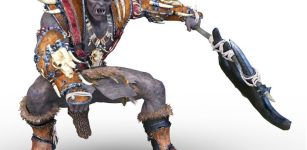 Fomorians In Irish Myths And Legends: Race Of Demonic Giants Who Inhabited Ireland And Scotland
Celtic Mythology | May 20, 2017
Fomorians In Irish Myths And Legends: Race Of Demonic Giants Who Inhabited Ireland And Scotland
Celtic Mythology | May 20, 2017 -
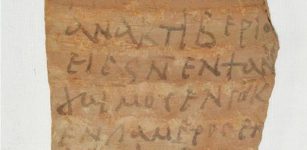 Rare Discovery Of More Than 18,000 Inscribed Pot Sherds Document Life In Ancient Egypt
Archaeology | Jan 31, 2022
Rare Discovery Of More Than 18,000 Inscribed Pot Sherds Document Life In Ancient Egypt
Archaeology | Jan 31, 2022 -
 Fossil Of Prehistoric Saber-Toothed Cat Found In Texas
Fossils | Jun 11, 2024
Fossil Of Prehistoric Saber-Toothed Cat Found In Texas
Fossils | Jun 11, 2024 -
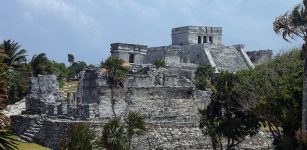 Tides And Hurricane Activity Impacted The Maya Civilization – What Can This Tell About Modern Climate Change?
Archaeology | Aug 18, 2021
Tides And Hurricane Activity Impacted The Maya Civilization – What Can This Tell About Modern Climate Change?
Archaeology | Aug 18, 2021 -
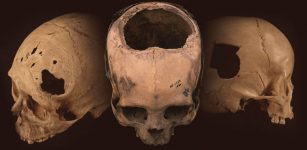 Ancient Peru’s Cranial Surgeons Had Remarkable Skills
Ancient Technology | Jun 8, 2018
Ancient Peru’s Cranial Surgeons Had Remarkable Skills
Ancient Technology | Jun 8, 2018 -
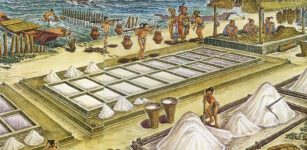 Salt Workers’ Residences At Underwater Maya Site – Identified
Archaeology | Nov 22, 2021
Salt Workers’ Residences At Underwater Maya Site – Identified
Archaeology | Nov 22, 2021 -
 The Red Dragon Of Wales – Ancient Symbol Dating Back To Roman Times
Ancient Symbols | Jan 3, 2018
The Red Dragon Of Wales – Ancient Symbol Dating Back To Roman Times
Ancient Symbols | Jan 3, 2018 -
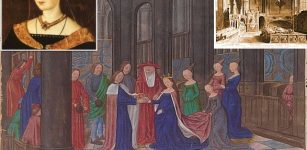 Solving The Mystery Of Westminster Abbey’s Lost Chapel And Disemboweled Saint – New Evidence
Archaeology | Dec 1, 2022
Solving The Mystery Of Westminster Abbey’s Lost Chapel And Disemboweled Saint – New Evidence
Archaeology | Dec 1, 2022 -
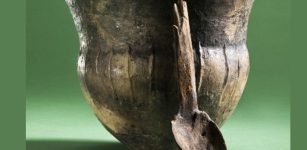 Early Farmers On The Baltic Coast Incorporated Fish Into Their Diets 6,000 Years Ago
Archaeology | Oct 17, 2023
Early Farmers On The Baltic Coast Incorporated Fish Into Their Diets 6,000 Years Ago
Archaeology | Oct 17, 2023 -
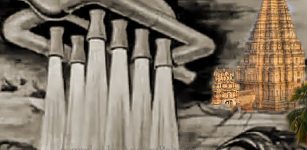 Vimanas Of The Rama Empire: Flying Machines Dominated Ancient Skies In Distant Past
Ancient Technology | Jul 23, 2017
Vimanas Of The Rama Empire: Flying Machines Dominated Ancient Skies In Distant Past
Ancient Technology | Jul 23, 2017 -
 Amazing Victorian Time Capsule – 135-Year-Old Message In A Bottle Found In Edinburgh
Archaeology | Nov 22, 2022
Amazing Victorian Time Capsule – 135-Year-Old Message In A Bottle Found In Edinburgh
Archaeology | Nov 22, 2022 -
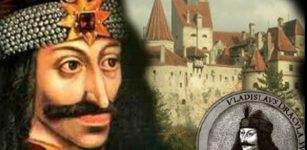 On This Day In History: Vlad III Dracula Regained Throne Of Wallachia For The Third Time – On Nov 26, 1476
News | Nov 26, 2016
On This Day In History: Vlad III Dracula Regained Throne Of Wallachia For The Third Time – On Nov 26, 1476
News | Nov 26, 2016 -
 Harappan Civilization Built Massive Protection Walls Against Tsunami 5,000 Years Ago
Archaeology | Jan 10, 2017
Harappan Civilization Built Massive Protection Walls Against Tsunami 5,000 Years Ago
Archaeology | Jan 10, 2017 -
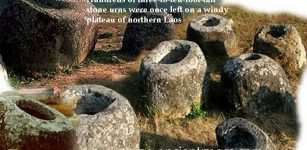 Mysterious Jars In Laos – Long-Lasting Mystery Is Still Unsolved
Archaeology | May 20, 2019
Mysterious Jars In Laos – Long-Lasting Mystery Is Still Unsolved
Archaeology | May 20, 2019 -
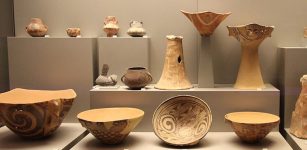 How Did Hunter-Gatherers Spread Knowledge Of Pottery Vast Distances Over A Short Period Of Time?
Archaeology | Dec 28, 2022
How Did Hunter-Gatherers Spread Knowledge Of Pottery Vast Distances Over A Short Period Of Time?
Archaeology | Dec 28, 2022 -
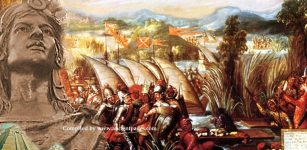 Cuauhtémoc: Brave And Determined Ruler Of Tenochtitlan And The Last Aztec Emperor
Featured Stories | Feb 28, 2018
Cuauhtémoc: Brave And Determined Ruler Of Tenochtitlan And The Last Aztec Emperor
Featured Stories | Feb 28, 2018 -
 Amazing Giant Rock Engravings Discovered In South America May Be The World’s Largest
Archaeology | Jun 5, 2024
Amazing Giant Rock Engravings Discovered In South America May Be The World’s Largest
Archaeology | Jun 5, 2024 -
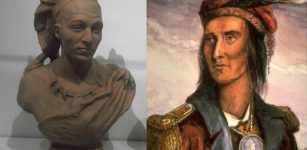 Tecumseh: Native American Mystic, Warrior, Hero And Military Leader Of The Shawnee
Featured Stories | Jun 3, 2016
Tecumseh: Native American Mystic, Warrior, Hero And Military Leader Of The Shawnee
Featured Stories | Jun 3, 2016 -
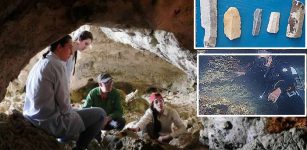 Early Expansion Of Homo sapiens: Underwater Caves Give New Clues About Sicily’s First Residents
Underwater Discoveries | Oct 15, 2024
Early Expansion Of Homo sapiens: Underwater Caves Give New Clues About Sicily’s First Residents
Underwater Discoveries | Oct 15, 2024 -
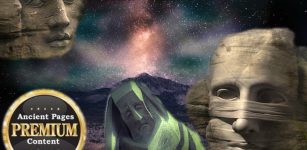 Home Of The Gods – Arrival Of Golden Ships – Part 1
Ancient Mysteries | Jun 12, 2018
Home Of The Gods – Arrival Of Golden Ships – Part 1
Ancient Mysteries | Jun 12, 2018

